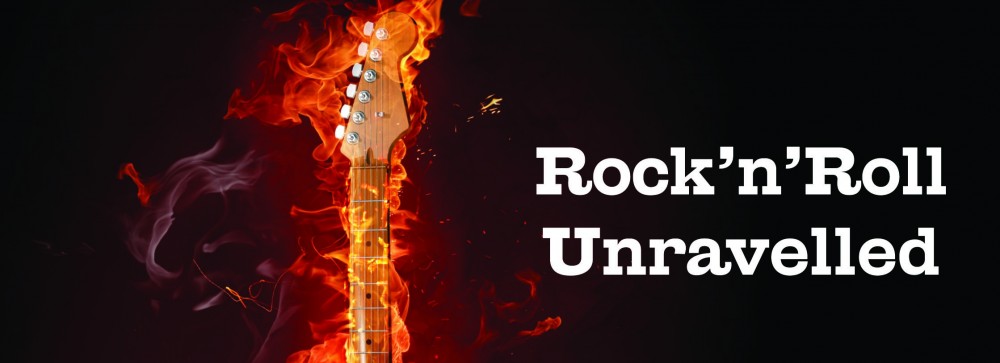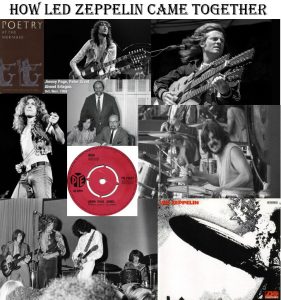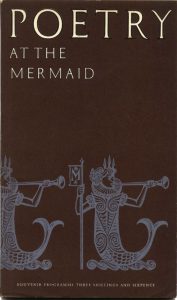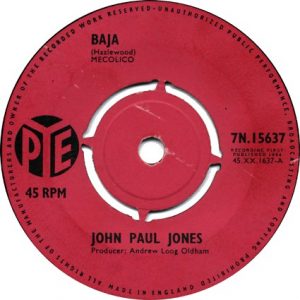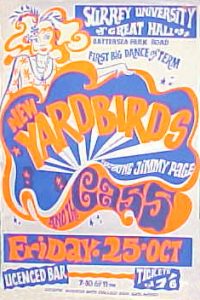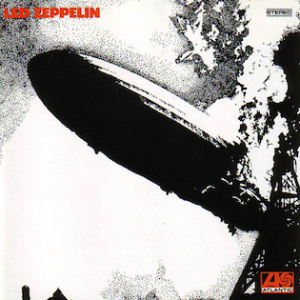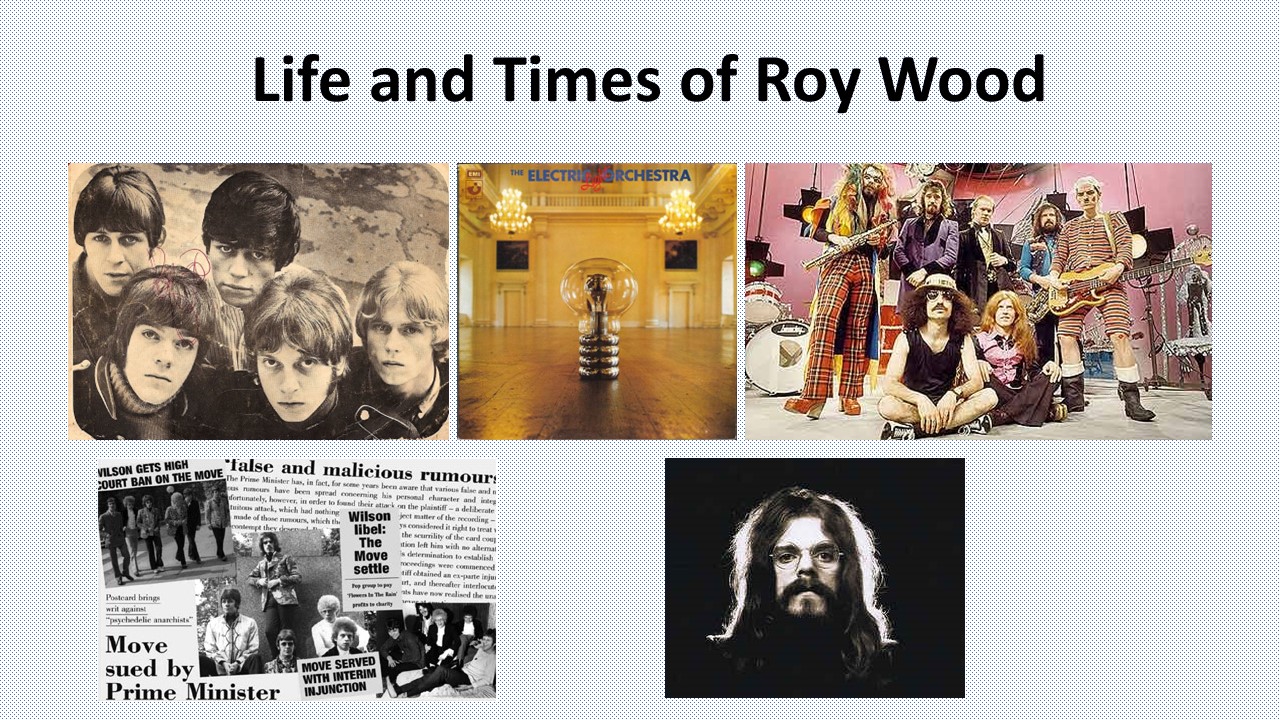12 January 1969 is the 50th anniversary of the release of Led Zeppelin’s first album – Led Zeppelin. This was the American release, UK fans had to wait another ten weeks before the album hit the streets.
This blog looks at how this legend of rock’n’roll came together.
How Led Zeppelin Came Together
Guitarist Jimmy Page was born in Heston, West London on 9 January 1944.
Bassist and arranger John Paul Jones was born John Baldwin, in Sidcup, Kent on 3 January 1946.
Drummer John Bonham was born in Redditch, Worcestershire on 31 May 1948.
Singer Robert Plant was born in West Bromwich, Staffordshire on 20 August 1948.
Jimmy Page
Jimmy Page started out in his first group, Red E Lewis and the Red Caps, in the late 1950s. By the early 1960s they had morphed into Neil Christian and the Crusaders.
On 21 July 1961 Jimmy Page appeared at the Poetry at the Mermaid festival, held at the Mermaid Theatre in London. The 17-year-old Page accompanied beat poet Royston Ellis in a fusion of music and beat poetry. Ellis had seen Page performing with the Neil Christian and the Crusaders on several occasions and invited him to the gig. Ellis was an accomplished beat poet and writer and gave poetry readings around this time. This was not the first time that he had used a rock’n’roll backing band. In 1960 Cliff Richard’s backing group, The Shadows, accompanied him. In June 1960 Ellis appeared at Liverpool’s Jacaranda club accompanied by a pre-Hamburg Beatles. Well, two of them anyway, John Lennon and Stuart Sutcliffe performed as the Dissenters with Ellis. On his website, Royston Ellis suggests that this inspired them to change the spelling of Silver Beetles to Silver Beatles. He is also accredited with being the inspiration for the Beatles songs Paperback Writer and Polythene Pam.
Towards the end of 1962 Jimmy Page left Neil Christian and the Crusaders and teamed up with Cyril Davies after he parted company with Alexis Korner. Davies felt it was time to move on, as Korner was bringing in saxophones and taking Blues Incorporated into a much more jazz-influenced direction. Davies preferred the more traditional Chicago blues and formed his own Rhythm & Blues All Stars.
As well as founding members Cyril Davies and Jimmy Page, the original lineup included drummer Carlo Little. He was one of the stalwarts of Screaming Lord Sutch’s Savages and was a regular drummer with the Rolling Stones, before Charlie Watts took the permanent position. Future-Who drummer Keith Moon famously went backstage at a gig to ask Little for drumming lessons.
In November 1962 Neil Christian released The Road to Love. Joe Meek produced both sides of the single and it also provided the platform for Jimmy Page’s recording debut.
John Paul Jones
John Paul Jones joined Jet Harris and Tony Meehan’ touring band in late 1962. The duo were previously the original Shadows rhythm section. On 2 January 1963, Jet Harris and Tony Meehan recorded Diamonds, their only UK #1. This provided Jimmy Page with his first job as a session guitarist. John McLaughlin reputedly performed as an uncredited rhythm guitarist.
Jimmy Page played briefly with Carter Lewis and the Southerners in 1963. John Carter and Ken Lewis are songwriters, they provided Mike Sarne with a UK hit in 1962 with Will I What. The Southerners also included drummer Viv Prince, who went on to join the Pretty Things. He was not a founding member but was with the band in time to appear on their debut album.
In 1964 John Carter and Ken Lewis formed the Ivy League, scoring their first UK hit with Funny How Love Can Be, a #8 in 1965. They also provided background vocals for the Who’s first hit, I Can’t Explain. The jury’s still out as to whether Jimmy Page played on the released version of the single.
John Paul Jones was a part of Jet Harris and Tony Meehan’s band when they toured the UK in the summer of 1963. The following April, he released his first solo single, Baja c/w A Foggy Day in Vietnam on the Pye record label. Andrew Loog Oldham produced both sides. John Paul Jones worked regularly as musician and arranger for Andrew Loog Oldham at his Immediate record label. Oldham suggested to John Baldwin that he should choose a more appropriate stage name. He suggested John Paul Jones, inspired by the movie starring Robert Stack as the American revolutionary hero.
Rod Stewart recorded his first single, Good Morning Little Schoolgirl, on 10 September 1964. Sonny Boy Williamson (I) wrote the song and recorded the original version in 1937. John Paul Jones was one of the session musicians on the track. The Yardbirds released the song as their second single around the same time that Rod Stewart released his version. This gave them a #44 and their first taste of UK chart success. Rod Stewart had to wait until 1971 for his first solo hit. That came with his cover of Tim Hardin’s Reason to Believe, originally released on his album Tim Hardin 1.
In 1965 Jimmy Page continued to build on his producing credentials with the release of two more singles, Fifth Avenue’s Bells of Rhymney on the Immediate label, and John Mayall and the Bluesbreakers’ I’m Your Witchdoctor.
Jimmy Page was back in the recording studios at IBC in the lineup to record Beck’s Bolero in May 1966. Beck’s Bolero was a take on Ravel’s original classical piece. Glyn Johns engineered the piece and the production credit is listed as Mickie Most but the credit should have gone to Jimmy Page and Simon Napier Bell. The writing credit is an interesting one. The original promo and release went out as Bolero, with the writing credit going to Jeff Beck. Later releases called the track Beck’s Bolero and gave the writing credit to Jimmy Page. Jeff Beck was still a member of the Yardbirds when he recorded the track, with Jimmy Page, Keith Moon and John Paul Jones. There were two sessions, 16 and 17 May, arranged by Simon Napier-Bell, who was the Yardbirds manager at the time.
Beck’s Bolero was the B-side when Jeff Beck left the Yardbirds and launched his solo career with Hi Ho Silver Lining on 10 March 1967.
Robert Plant and John Bonham
Time to welcome Robert Plant and John Bonham to the story. In 1965 he joined the Crawling King Snakes and was joined slightly later by John Bonham.
On 25 November 1966 Robert Plant’s first appearance on vinyl came when his band, Listen, released the single You’d Better Run. It was written by Felix Cavaliere and Eddie Brigati of the Young Rascals and gave then an American #20 and their second US hit. Robert Plant was the only group member to perform on the record, the rest were all session musicians. The same thing happened when the Byrds released their debut single, Mr Tambourine Man. They all sang on the track but Roger McGuinn was the only band member to play his instrument. The music came courtesy of the legendary Wrecking Crew session musicians, who gave Phil Spector, his wall of sound.
Two weeks after Listen released You Better Run, it was also released by the N’ Betweens, who later found fame as Slade. Neither single troubled the charts but as both groups were based in the West Midlands, the local competition for record sales was fierce.
The Yardbirds
Jimmy Page played his first gig with the Yardbirds on 1 June 1966. This was at the Marquee club and it turned out to be the last time that the band played there. Bassist Paul Samwell-Smith had recently parted company with the band and Jimmy Page was brought in to complete the lineup. Jeff Beck was lead guitarist and rhythm guitarist Chris Dreja moved to bass. This meant that the Yardbirds briefly became a dual-lead guitar band.
Peter Grant
Around the same time that Jimmy Page joined the Yardbirds, Peter Grant became their manager. He took over from Simon Napier-Bell, who wanted to focus his attention on becoming a film producer. Napier-Bell took over the Yardbirds from Giorgio Gomelsky. One of the powerhoused behind 1960s rock’n’roll, Gomelsky founded the Crawdaddy Club in Richmond, West London and managed the Rolling Stones before Andrew Loog Oldham came on the scene.
Peter Grant had worked with Mickie Most at the 2is skiffle club in London’s Soho. In 1963 Don Arden hired Grant as British Tour Manager for American artists visiting these shores. He worked with some of the biggest names of the day including, Bo Diddley, The Everly Brothers, Little Richard and a host of others. The next step in Peter Grant’s career came with artist management, when he took on the Jeff Beck Group, Terry Reid, The Nashville Teens, She Trinity and others. Further success came with Mickie Most, when they set up RAK Records together.
The Yardbirds featured in the movie Blow-Up, directed by Michelangelo Antonioni. It opened in America on 18 December 1966 and featured a performance by the Yardbirds of Stroll On, with the dual lead guitars of Jimmy Page and Jeff Beck.
Richard Cole was another player soon to join the Led Zeppelin story. In late 1967 he in America and tour manager for Vanilla Fudge.
In 1966 Robert Plant joined Band of Joy. It didn’t work out and the band and Robert Plant went their separate ways. Disgruntled, Plant formed his own band in 1967 and called it – Band of Joy. Plant was joined in the band by his old mate from crawling King Snake, John Bonham
Billed as Robert Plant and the Band of Joy, on 23 February 1968 Robert Plant and John Bonham played in a gig at the Marquee club. Tim Rose headlined The Blues Night with additional support from the Aynsley Dunbar Retaliation. Not long after this Marquee gig Band of Joy split up.
This gig proved to be very beneficial to John Bonham. Tim Rose was so impressed by Bonham that he asked him to join his touring band. An offer Bonham accepted without hesitation. Robert Plant did not fare quite as well in the aftermath of Band of Joy. He initially had to earn his living as a labourer laying hot asphalt. Things looked up when he recorded a couple of tracks, Steal Away and Operator with one of the godfathers of British blues, Alexis Korner. Back in the saddle, his final band before Led Zeppelin was Hobbstweedle.
Other Band of Joy luminaries include: Noddy Holder, he was a roadie, went on to become Slade’s frontman; drummer Pete Robinson and guitarist Kevyn Gammond joined Jess Roden in Bronco; Dave Pegg went on to play with Fairport Convention and Jethro Tull.
The Yardbirds’ swansong came on 7 July 1968 at Luton Technical College, Bedfordshire. The final lineup was: Keith Relf, Jim McCarty, Jimmy Page and Chris Dreja.
After the split:
Keith Relf and Jim McCarty stayed together and formed the acoustic duo Together. After a couple of singles as Together they recruited pianist John Hawken from the Nashville Teens, bassist Louis Cennamo previously with the Herd, Keith’s sister, Jane, as vocalist, and Renaissance was born.
Chris Dreja started out looking for replacements for Relf and McCarty to form the new band but along the way he lost interest in being in a rock’n’roll band and became professional photographer.
Jimmy Page and Peter Grant continued the search and put a new lineup together – Led Zeppelin.
Richard Cole joined the others as tour manager for the last Yardbirds tour. He stayed on and became tour manager for Led Zeppelin.
Search for a New Band
On 8 July EMI issued a Press Release letting the world know that the Yardbirds would be reformed, with Jimmy Page, Chris Dreja and two new members.
Peter Grant already managed singer Terry Reid and offered him the opportunity to be frontman for the new band. Preferring to continue with his own career, Terry Reid famously turned down the offer and recommended that they should have a chat with his friend, Robert Plant.
On 20 July 1968 Jimmy Page, Chris Dreja and Peter Grant went to see Robert Plant at a Hobbstweedle concert in Birmingham, at the local Teachers Training College. They loved Plant’s energy, he came on board and recommended his pal from Crawling King Snake and Band of Joy days, John Bonham.
A little over a week later the trio checked out John Bonham, playing in Tim Rose’s backing band at the Country Club in London’s Hampstead.
By now Chris Dreja had turned his back on the music business to become a photographer. Jimmy Page knew John Paul Jones from their session musician days. He accepted the offer and the lineup was complete.
Led Zeppelin was in Place
Led Zeppelin was now in place: Jimmy Page – guitar, Robert Plant – vocals, John Bonham – drums, John Paul Jones – bass, and at the helm Peter Grant – manager, assisted by Richard Cole – tour manager.
On 25 Aug 1968 they were recording together for the first time, as backing musicians for PJ Proby’s album Three Week Hero.
The first gig with the Led Zeppelin lineup came on 7 September at the Teen Clubs, Gladsaxe in Denmark. This opened a ten-day tour of Denmark and Sweden. They were still billed as “The Yardbirds” because Peter Grant still had commitments for the Yardbirds.
Their first recording session followed a month later at Olympic Studios in London, when they began work on their first album. Glyn Johns was the engineer and it was produced by Jimmy Page. They recorded the album in a little over 30 hours, at a reputed cost of £1,782. This was self-financed, since the band was still without a recording contract.
The band’s first UK gig came at the Marquee in London on 18 October. The club’s poster billed the event as “The British debut of The Yardbirds”.
On 25 October they played a concert at Surrey University. This time, the college’s poster for the event billed them as “New Yardbirds featuring Jimmy Page”. This concert is often cited as the first time they played as “Led Zeppelin” but the college’s own poster does not support this.
At the Middle Earth at the Roundhouse in London on 9 November, the band was finally billed as Led Zeppelin, “YARDBIRDS now known as LED ZEPPELIN”. The event was an all-nighter which included blues legend John Lee Hooker.
There are various accounts of how the band’s name came about but all roads lead back to Keith Moon and John Entwistle. They were both in the Who and the band referred to a disastrous gigs as – going down like a “lead Zeppelin”, as a play on “lead balloon”. In a conversation in 1966, one of the times that the Who was on the edge of splitting up, Keith Moon and John Entwistle talked to Jimmy Page about forming a new group. They joked that the line-up was “so heavy, it will go down like a lead Zeppelin”. John Entwistle, in an interview with Rolling Stone magazine, said that he and Moon were talking about leaving the Who and forming a band with Richard Cole, who was their chauffeur at the time. He went on to say that he was going to call the band Led Zeppelin and had already produced a cover of a R/101 Zeppelin going down in flames, in black and white. Richard Cole left the Who two weeks later – to work for Jimmy Page.
When Page and Co adopted the name, they dropped the “a”, so that American audiences didn’t pronounce it lead, as in plead.
Atlantic Records issued a Press Release on 23 November, announcing that Led Zeppelin had signed to the label. When they entered Olympic Studios the group was without recording contract. Manager Peter Grant decided to fly to America to score a record deal over there. He talked to Ahmet Ertegun, one of the founders of Atlantic Records, and he signed them to the label for an advance reputed to be in the region of $200,000. A colossal fee at that time.
Initially work was scarce in Britain so Peter Grant took the band to America, to see if they could build a reputation there.
Led Zeppelin played their American debut on 26 December in a concert at Auditorium Arena, Denver. They supported Vanilla Fudge and Spirit. As the opening act they were not always billed.
Richard Cole may well have had a hand in securing the gig. He was tour manager for Vanilla Fudge in 1968 and probably had some useful contacts.
Another interesting aspect of their first American tour to ponder on, is the fact that the other band they supported was Spirit. On Spirit’s first album, released in January 1968, they included the track Taurus. This was the track claimed to have been plagiarised by Led Zeppelin’s Stairway to Heaven. If it was a regular inclusion on Spirit’s set-list… Stairway to Heaven was cleared of plagiarism in 2016.
Happy 50th Anniversary!
Our story ends on 12 January 1969, Led Zeppelin released their first album, Led Zeppelin. This was an American release, UK fans had to wait another ten weeks, until the 28 March, for the album to become available in UK record stores.
The album comprised six original songs and three covers. Anne Bredon wrote Babe I’m Gonna Leave You, originally released by Joan Baez in 1962. Willie Dixon takes credit for two tracks, You Shook Me and I Can’t Quit You Baby. You Shook Me has an interesting background. It began life as the 1961 instrumental Blue Guitar by Earl Hooker. Willie Dixon added lyrics and Muddy Waters released it as You Shook Me, a B-side in 1962.
